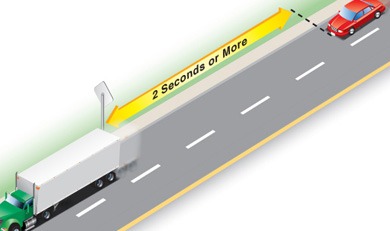Defensive Driving Tips
Defensive driving techniques help reduce the risk of accidents by keeping you prepared for unexpected situations. Here are some key techniques to improve your safety on the road:
1. Scan the Road Ahead
Look at least 12-15 seconds ahead to anticipate potential hazards.
Watch for brake lights, pedestrians, and sudden lane changes.
2. Keep a Safe Following Distance
Use the 3-second rule (increase to 5+ seconds in bad weather).
This gives you enough time to react if the car in front stops suddenly.
3. Expect the Unexpected
Assume other drivers might make mistakes.
Be ready to react to sudden stops, lane changes, or distractions.
4. Avoid Blind Spots
Adjust mirrors properly and check over your shoulder before changing lanes.
Stay out of other drivers' blind spots to avoid surprises.
5. Maintain a Safe Speed
Follow the speed limit and adjust for road conditions.
Driving too fast or too slow can increase the risk of accidents.
6. Use Defensive Positioning
Stay in the lane that offers the best visibility and escape routes.
When stopping at traffic lights, leave space between you and the car ahead.
7. Communicate Clearly
Use turn signals well in advance.
Make eye contact with pedestrians and drivers when necessary.
8. Be Extra Cautious at Intersections
Look left-right-left before proceeding.
Be prepared for red-light runners and sudden stops.
9. Adapt to Road Conditions
In rain, fog, or snow, reduce speed and increase following distance.
Use headlights and avoid sudden braking.
10. Control Your Emotions and Avoid Aggressive Driving
Stay calm and patient; don’t engage with aggressive drivers.
If someone is tailgating, safely change lanes or let them pass.
11. Have an Escape Plan
Always think about where you can go if something unexpected happens.
Keep space around your vehicle whenever possible.
12. Avoid Distractions and Stay Focused
Keep both hands on the wheel and eyes on the road.
Avoid using your phone, eating, or adjusting the radio while driving.
By following these defensive driving techniques, you’ll improve your reaction time, reduce the risk of accidents, and keep yourself and others safe on the road


